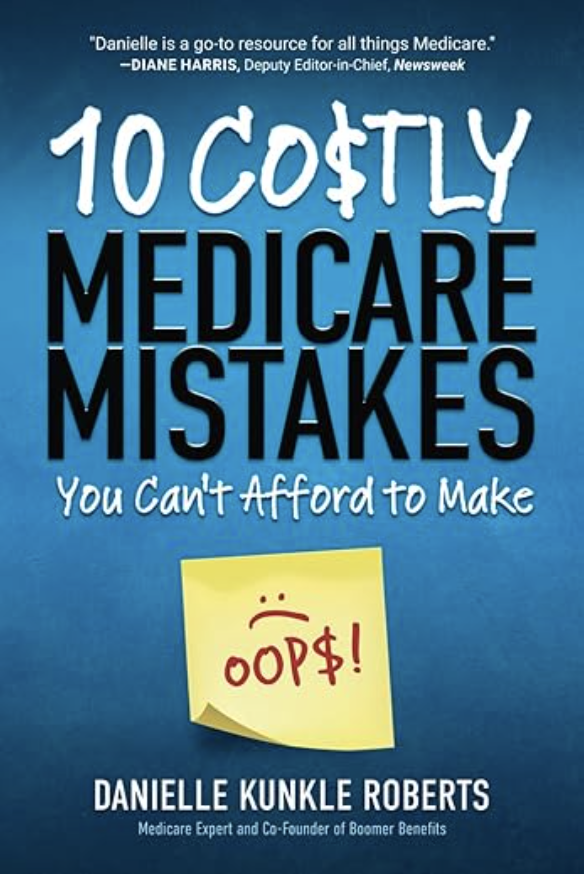Medicare Math” Changes to 2025 Medicare calculations for prescription drugs
Lower out-of-pocket drug costs in 2024 and 2025
- Most people with Medicare drug coverage (Part D) don’t reach either the coverage gap phase or the catastrophic coverage phase. However, those who do reach the catastrophic coverage phase in 2024 will get significant savings.
- For 2024, the new prescription drug law places a cap on annual out-of-pocket costs on Part D drugs if you reach the catastrophic coverage phase, which begins at a threshold of $8,000 in what’s called true out-of-pocket (TrOOP) costs. For most people, you’ll contribute roughly between $3,300 and $3,800 toward the cap of $8,000, and then pay $0 for your covered Part D drugs for the rest of the year.
Previously, if you had Medicare Part D drug coverage and reached the catastrophic coverage phase, you continued to pay 5% of your drug costs for the rest of the year. Now you’ll save, on average, hundreds of dollars in copayments in 2024. - In 2025, you’ll pay no more than $2,000 in out-of-pocket costs.
The catastrophic phase of the Medicare drug coverage benefit in 2024
- Medicare drug coverage has 4 phases in 2024—the deductible, initial coverage, coverage gap, and catastrophic coverage. The phase you’re in depends on your drug spending, drug types (brand name versus generic), and your plan’s benefit design.1
- Your TrOOP costs include your own out-of-pocket payments, plus other payments for your covered drugs that certain people or organizations make for you (like Medicare’s Extra Help program or manufacturer payments for brand name drugs as part of the Medicare Coverage Gap Discount Program). How quickly you enter the catastrophic coverage phase depends on your specific mix of brand name and generic drugs.
Your estimated out-of-pocket costs if your TrOOP costs reach $8,000 in 2024 (and enter the catastrophic coverage phase)
1 Progression through the deductible and initial coverage phases are based on total gross covered prescription drug costs, as defined in § 423.308, which refers to spending on covered Part D drugs by people with Part D or on their behalf by any third party as well as the Part D plan. Once total gross covered prescription drug costs for a person with Part D reach the deductible amount under the defined standard benefit, that person transitions into the initial coverage phase. Similarly, when total gross covered prescription drug costs for a person reach the initial coverage limit, that person transitions into the coverage gap. By contrast, progression through the coverage gap is determined by accumulated true out-of-pocket (TrOOP) spending. TrOOP is spending on covered Part D drugs by the person or on his/her behalf by certain third parties (see sections 1860D-2(b)(4)(C)(iii) and (E) of the Social Security Act and the definition of incurred costs in § 423.100), including manufacturer discounts provided as required under the Coverage Gap Discount Program. Once accumulated TrOOP for a person reaches the annual OOP threshold, that person enters the catastrophic coverage phase.
Your exact out-of-pocket contribution to reach $8,000 in TrOOP depends on your plan’s benefit design and the mix of brand name and generic drugs you take. Based on our analysis of total out-of-pocket spending when you reach the catastrophic coverage phase:
- Using only brand-name drugs, you’ll have around $3,300 in total out-of-pocket costs.
- Using an average amount of generic drugs, you’ll have around $3,400 in total out-of- pocket costs.
- Using a higher-than-average amount of generic drugs, you’ll have total out-of-pocket costs of approximately $3,800.
- Using only high-cost generic drugs, your total out-of-pocket costs are approximately $8,000 because you didn’t take any brand name drugs (which a manufacturer would make discount payments for under the Medicare Coverage Gap Discount Program). Less than 1% of people with Medicare drug coverage who reach the catastrophic coverage phase use only generic drugs.
Note: People taking insulin are unlikely to reach the catastrophic coverage phase due to insulin costs, because the new prescription drug law capped cost sharing for insulin at $35 per month’s supply per covered insulin product.
Below are examples of what your maximum out-of-pocket spending could look like depending on your mix of brand name and generic drugs.
Examples of out-of-pocket spending if you reach the catastrophic coverage phase in 2024
Whether you’re taking only brand-name drugs or a mix of brand-name and generic drugs, most people who reach the catastrophic coverage phase in 2024 will pay between $3,300 and $3,800 in out-of-pocket costs.
1. Mr. Alvarez takes 100% brand-name drugs, including high-cost drugs
In 2024, Mr. Alvarez takes $200,000 in Medicare Part D covered brand-name drugs. He pays $1,666 in out-of-pocket costs before reaching the coverage gap phase. He’s responsible for paying 25% of drug costs in the coverage gap phase. For brand-name drugs, both the amount he pays and the amount the manufacturer pays in coverage gap discounts count towards his TrOOP. When Mr. Alvarez reaches the catastrophic coverage phase (when his TrOOP = $8,000), his total out-of-pocket spending that he pays himself will be approximately $3,300 — manufacturer discounts paid $4,700, to reach a total of $8,000 in TrOOP spending.
How things changed:
- In 2023, once Mr. Alvarez reached the catastrophic coverage phase, he continued to pay 5% of his drug costs for the rest of the year. His total out-of-pocket costs for 2023 would have been approximately $12,000.
- In 2024, once Mr. Alvarez’s TrOOP equals $8,000, he’ll pay $0 in out-of-pocket costs for the rest of the year. Based on the drugs he takes, his total out-of-pocket costs for 2024 will be approximately $3,300, a savings of around $8,700.

2. Mrs. Smith takes a mix of brand-name and generic drugs
In 2024, Mrs. Smith takes a mix of Medicare Part D covered brand-name and generic drugs, with a total annual drug cost of $132,000. She pays $1,666 in out-of-pocket costs before reaching the coverage gap phase. She’s responsible for paying 25% of drug costs in the coverage gap phase. For brand-name drugs, both the amount she pays and the amount the manufacturer pays in coverage gap discounts count towards her TrOOP. However, for generic drugs, only her out-of-pocket spending counts towards her TrOOP. When Mrs. Smith reaches the catastrophic coverage phase (when her TrOOP = $8,000), her total out-of-pocket spending that she pays herself will be approximately $3,800. Manufacturer discounts paid $4,200 for her brand-name drugs, to reach a total of $8,000 in TrOOP spending.
How things changed:
- In 2023, once Mrs. Smith reached the catastrophic coverage phase, she continued to pay 5% of her drug costs for the rest of the year. Her total out-of-pocket costs for 2023 would have been approximately $9,000.
- In 2024, once Mrs. Smith TrOOP equals $8,000, she’ll pay $0 in out-of-pocket costs for the rest of the year. Based on the drugs she takes, her total out-of-pocket costs for 2024 will be approximately $3,800, a savings of around $5,200.




